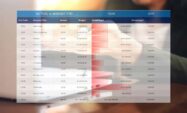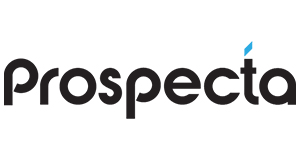SAP General Ledger
Filter By
Browse By
- SAP Analytics and AI
- SAP Application Development and Integration
- All SAP Application Development and Integration
- SAP ABAP
- SAP ABAP Development Tools
- SAP ABAP Test Cockpit
- SAP API Management
- SAP BAPI
- SAP Basis
- SAP BRF
- SAP Business Application Studio
- SAP CMS
- SAP Design Studio
- SAP Development Tools
- SAP DevOps
- SAP EAI
- SAP EDI
- SAP Extension Suite
- SAP Fiori
- SAP Fiori Elements
- SAP Integration Suite
- SAP Low Code Application Development
- SAP Low Code Automation
- SAP Netweaver
- SAP Release Management
- SAP UI5
- SAP Web Application Server
- SAP Web IDE
- SAP Business Process Management
- SAP Center of Excellence
- SAP CIO
- SAP Customer Experience
- SAP Data and Data Management
- All SAP Data and Data Management
- SAP BW
- SAP BW/4HANA
- SAP Crystal Reporting
- SAP Data Archiving
- SAP Data Center
- SAP Data Governance
- SAP Data Integration
- SAP Data Migration
- SAP Data Quality
- SAP Data Services
- SAP Data Strategy
- SAP Data Visualization
- SAP Data Warehouse Cloud
- SAP DMS
- SAP Document Control
- SAP EIM
- SAP ETL
- SAP ETL Tools
- SAP HANA
- SAP HANA Administration
- SAP HANA Deployment Infrastructure
- SAP HANA Studio
- SAP Master Data
- SAP Master Data Governance
- SAP MDM
- SAP Enterprise Architect
- SAP Enterprise Asset Management
- SAP ERP
- SAP Finance
- All SAP Finance
- SAP Accounting
- SAP AR AP
- SAP Asset Accounting
- SAP Billing Systems
- SAP BPC
- SAP BRIM
- SAP Cash Management
- SAP Central Finance
- SAP Controlling
- SAP COPA
- SAP Cost Center Accounting
- SAP e-invoicing
- SAP FICO
- SAP Finance Automation
- SAP Financial Closing Cockpit
- SAP Financial Consolidation
- SAP Financial Planning
- SAP FX Risk
- SAP General Ledger
- SAP Global Tax Management
- SAP Hyperion
- SAP Order to Cash
- SAP Payment Processing
- SAP Profitability Analysis
- SAP Rebate Management
- SAP S/4HANA Finance
- SAP Universal Journal
- SAP Governance Risk and Compliance
- SAP Human Capital Management
- SAP Intelligent Technologies
- SAP Platform and Technology
- All SAP Platform and Technology
- SAP Business Technology Platform
- SAP Cloud Connector
- SAP Cloud Integration Platform
- SAP Cloud Migration
- SAP Cloud Platform
- SAP Cloud Providers
- SAP Cloud Strategy
- SAP Container Platform
- SAP Digital Asset Management
- SAP Digital Integration Hub
- SAP Digital Signature
- SAP HANA Enterprise Cloud
- SAP HEC
- SAP Hyperscalers
- SAP Infrastructure
- SAP Messaging
- SAP Smart Forms
- SAP Quality and Testing
- SAP Security
- SAP Spend Management
- SAP Supply Chain Management
- All SAP Supply Chain Management
- SAP APO
- SAP Asset Management
- SAP Business Network
- SAP Digital Manufacturing Cloud
- SAP Digital Twin
- SAP EWM
- SAP IBP
- SAP Inventory Management
- SAP Label Printing
- SAP Logistics
- SAP Manufacturing
- SAP Manufacturing Automation
- SAP MES
- SAP MII
- SAP MM
- SAP MRO
- SAP MRP
- SAP Order Management
- SAP Plant Maintenance
- SAP PLM
- SAP Production Planning
- SAP S&OP
- SAP SD
- SAP SPM
- SAP Supply Chain Planning
- SAP Track and Trace
- SAP Transportation Management
- SAP System Administration
SAP General Ledger: An Overview and Key Considerations
What Is SAP General Ledger?
SAP General Ledger (G/L) accounts support the recording of all business transactions, updating balances in real time to provide an extensive view of an organization’s business activities. The former version of SAP General Ledger is referred to as Classic General Ledger (Classic G/L). New G/L leverages an extended data structure that helps finance managers reduce the need for periodic closing activities to synchronize Financial Accounting (FI) and Controlling (CO) modules. This ensures accurate accounting for financial statements.
New SAP General Ledgers support “parallel accounting” functionality, allowing organizations to maintain multiple ledgers for various statutory accounting standards or introduce a special purpose ledger. SAP customers can integrate SAP General Ledger with all operational areas of the company via SAP ERP components to track external and internal transaction postings and settlements. The transactions include business activities originating from profit centers and subsidiary companies, ensuring complete accounting information for generating accurate internal and external financial reporting across the organization.
Key SAP General Ledger functions for entering and evaluating posting data:
- Group-level or company-level accounting capacity
- Subledger items automatically posted to the appropriate general ledger accounts (reconciliation)
- Tight integration of parallel general ledgers and cost accounting areas, allowing for real-time synchronization
- Multiple balance sheet views and account displays of financial information to provide real-time evaluation of and reporting on current posting data.
Key Considerations for SAPinsiders
SAP General Ledger: An Overview and Key Considerations
What Is SAP General Ledger?
SAP General Ledger (G/L) accounts support the recording of all business transactions, updating balances in real time to provide an extensive view of an organization’s business activities. The former version of SAP General Ledger is referred to as Classic General Ledger (Classic G/L). New G/L leverages an extended data structure that helps finance managers reduce the need for periodic closing activities to synchronize Financial Accounting (FI) and Controlling (CO) modules. This ensures accurate accounting for financial statements.
New SAP General Ledgers support “parallel accounting” functionality, allowing organizations to maintain multiple ledgers for various statutory accounting standards or introduce a special purpose ledger. SAP customers can integrate SAP General Ledger with all operational areas of the company via SAP ERP components to track external and internal transaction postings and settlements. The transactions include business activities originating from profit centers and subsidiary companies, ensuring complete accounting information for generating accurate internal and external financial reporting across the organization.
Key SAP General Ledger functions for entering and evaluating posting data:
- Group-level or company-level accounting capacity
- Subledger items automatically posted to the appropriate general ledger accounts (reconciliation)
- Tight integration of parallel general ledgers and cost accounting areas, allowing for real-time synchronization
- Multiple balance sheet views and account displays of financial information to provide real-time evaluation of and reporting on current posting data.
Key Considerations for SAPinsiders
Leverage New G/L functionality for enhanced transaction drilldown capability and auditability. Online document splitting is standard functionality in New G/L, allowing finance managers to review all business transactions across various levels. Those levels include account information, journals, transactions figures and totals, and balance sheet profit/loss evaluations, to audit individual transactions in real time, supported by streamlined access to original documents, line items, and monthly debits/credits.
Evaluate core reporting requirements before establishing new G/L accounts. Information provided for statutory and management accounting tasks is ultimately governed by G/L master data. Business stakeholders or subject matter experts should confirm business processes and master data dependencies properly align with how GL accounts and sub-accounts are defined, to support automation opportunities and integration initiatives.
Consider migration to SAP S/4HANA as an opportunity to optimize G/L accounts. SAP provides pre-built functionality for standard chart of accounts (YCOA) as best practices for organizations, using existing chart of accounts. Organizations can leverage additional granularity from 350+ fields and dimensions, to achieve business process efficiencies in the areas of account maintenance and financial closing activities. Furthermore, finance managers can benefit from new G/L and Universal Journal functionality to update existing chart of accounts to better align with legal entities and business process needs across industry, operating regions, company size, corporate structure, etc.
12 results
-

- SAP General Ledger
 Premium
Premium
Working With SAP Material Ledger and SAP Group Reporting in HANA 2022
Published: 08/September/2023
Reading time: 15 mins
Intercompany transactions require significant attention and have always been a critical part of the financial analysis world in SAP. Certainly, this process is very complex, and it will require significant resources with different levels of expertise as operational reporting and business requirements become more detailed. In this article, SAPinsider expert Dr. March Sisfontes-Monge will highlight…
-

Core Accounting is a Growing Priority for SAPinsiders
Published: 02/May/2022
Reading time: 3 mins
In our SAP S/4HANA Finance and Central Finance: State of the Market 2022 benchmark report, we saw the share of SAPinsider organizations planning to invest resources into core accounting processes increase to 28% (from 18% in 2021). These organizations view this finance and accounting strategy as an opportunity to address growing organizational complexity, the top…
-

Building Consistent Global GL Processes
Published: 30/July/2021
Reading time: 3 mins
When SAP first launched SAP S/4HANA, the latest iteration of its core ERP, the mantra was “Run Simple.” That marketing jargon was born out of a motivating factor for many finance professionals — to create a simplified general ledger (GL) concept, moving from many ledgers down to one for the entire business. Regardless of whether…
-
-

- SAP General Ledger
 Premium
Premium
Best practices for managing the standardization of chart of accounts in a live SAP system
Learn about your options to tame a chart of accounts that has grown to be unmanageable and unwieldy, and dive into key considerations for a successful and seamless chart of accounts standardization initiative using SLO-type conversion methodology. By attending, you learn: - Learn about the structural transformations you should do in your system, prior to…
-

How SAP S/4HANA Drives General Ledger Account Optimization
Published: 30/March/2021
Reading time: 2 mins
The universal journal is a single table incorporating all financial information and select logistics and operational information. While many finance controllers, system implementors, and accountants acknowledge the reporting benefits of having information stored in a single table, the recent combination of the Finance and Controlling tables into the universal journal in the latest version of…
-

- SAP General Ledger
 Premium
Premium
Technical Guide: Migrating SAP General Ledger Data for SAP S/4HANA
Published: 31/July/2020
Reading time: 11 mins
SAP has simplified its accounting design by introducing the Universal Journal, resulting in significant change to the pillar of GL accounting—GL account master data. Whether a customer is pursuing a greenfield implementation or a technical migration to SAP S/4HANA, maintenance or migration to GL accounts using the new technical framework is a basic yet important…
-

Inside the Value of the SAP S/4HANA for Financial Products Subledger Solution: Insurance Provider Swiss Re Teams with SAP to Take SAP S/4HANA for Financial Products Subledger to the Next Level
Published: 17/February/2020
Reading time: 6 mins
by Esther Shein, Contributing Writer, SAPinsider Digital transformation is paving the way for insurance companies to modernize their processes and Swiss Re, one of the world’s largest wholesale insurance and reinsurance providers, has partnered with SAP to develop and test its SAP S/4HANA for Financial Products Subledger (FPSL). This innovative solution provides concurrent accounting across multiple accounting bases…
-
-

A Comprehensive Subledger Solution For Finance Transformation
Published: 21/August/2019
Reading time: 1 min
Simplify accounting for financial products with SAP.
-

Regain Control of SAP Journal Entries
Published: 01/April/2019
Reading time: 2 mins
Many companies struggle with a variety of problems regarding their journal entry processes — such as approval procedures, accounting requirements, and complex workflows — that are unique to their business. A good number of these are SAP customers that continue to collect, route, and manage their journal entries with manual processes, emails, and spreadsheets, which…
-

Best Practices to Manage a Smooth Chart-of-Accounts Conversion in an SAP Environment
Published: 27/December/2017
Reading time: 10 mins
You are a massive global organization with a complex system landscape and want to embark upon an SAP General Ledger (formerly known as new G/L) or SAP S/4HANA journey. These best practices help you clean up and standardize key processes or data to prepare for a chart-of-accounts (COA) conversion. Key Concept Once the SAP system...…
Become a Member
Unlimited access to thousands of resources for SAP-specific expertise that can only be found here.
Related Vendors
Your request has been successfully sent

